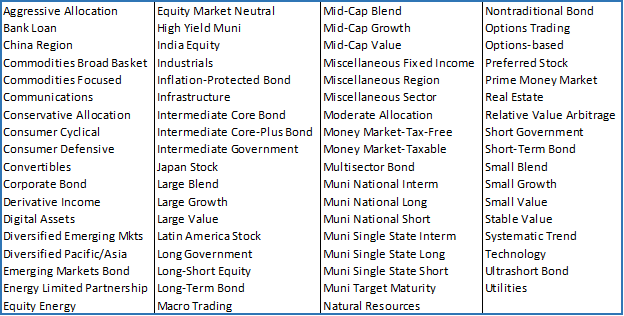These days, at 40 years old with two children, a demanding career and a an 8-piece band, it’s hard to find time to do anything. My life seems to resemble a triangle: in one corner is a job that I love, in another people that I love, and in a third music that I love. The lack of time to do anything else is a blessing in disguise. It allows me to focus on what I do best and to hone those skills. The amount of progress I have experienced in those three areas of my life has been immense and it is a direct result of the fact that I don’t spend much time doing anything else. If my life were more like a square or a pentagon, it would just mean less time for family, career, and music.
Warren buffet once said “Defining what your game is — where you’re going to have an edge — is enormously important. Once you’ve done that, buy and hold.” This is how I think about that triangle just mentioned. When it comes to portfolio management it is a similar concept: choose your lanes and stay the course.
The art of portfolio management starts with asset allocation. What asset classes do we want to use in our portfolio? There is a growing list of these. Two generations ago there were basically three: stocks, bonds, and real estate. Today, there is a cornucopia of asset classes. Below is a list commonly cited by most financial and investment institutions.

Wow, that’s a lot. Obviously, a well-diversified portfolio doesn’t need all these asset classes, but it does need to think beyond just stocks, bonds, and real estate. Almost all portfolios will and should have some large-cap exposure. But whether it needs small or mid-caps is debatable. Typically, the more equity exposure you have the more equity categories will be used. But what’s most important is sticking with the asset classes once you’ve chosen them. This is known as strategic asset allocation. Here, our personal opinions about where we think each asset class is headed are irrelevant. If your strategy is to have 10% in small caps, then you rebalance to that target on a regular basis. If you were to shift your exposure to small caps to 15% because you thought that asset class was poised to outperform, then you are engaging in tactical asset allocation. Here, we are adjusting target weights to our asset’s classes.
Tactical asset allocation is more speculative than strategic. It is also more likely to result in sub-par returns if you don’t know what you are doing. Ironically, sometimes doing nothing can result in a tactical decision. Often when one asset class outperforms, investors are reluctant to rebalance because what you are essentially doing is selling an asset class that is doing well and buying one that isn’t. But is this not the ultimate investing mantra? Buy low and sell high? Recency bias – a common behavioral finance pitfall – is rampant in portfolio management. Sticking to your asset allocation and maintaining a strategic approach can keep investors from making this mistake.
There is a third portfolio strategy known as dynamic asset allocation. Using this technique involves getting in and out of asset classes all together. Obviously, this is the most speculative of three strategies and should rarely be used.
If you are managing your nest egg yourself and have never asked yourself; What assets classes do I want to own? Then you might not be taking this job as seriously as you need to. Which particular asset classes you own is not the most important part, what’s imperative is that you clearly define a strategy and stick with it.